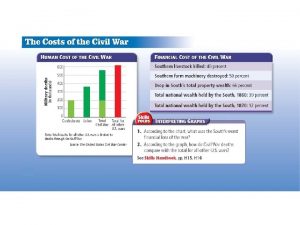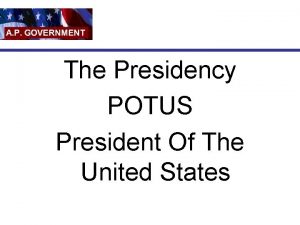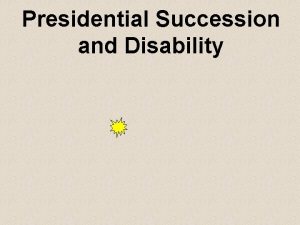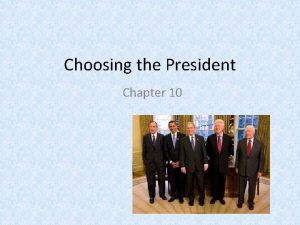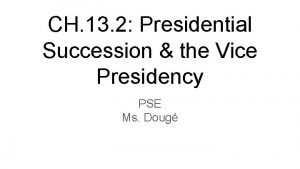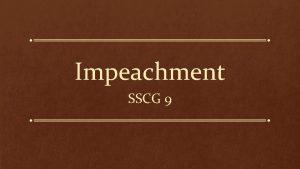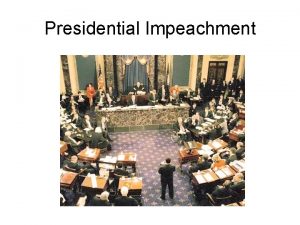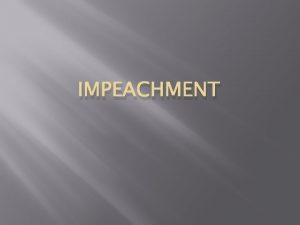Presidential Succession and Impeachment Presidential Succession n 25







- Slides: 7


+ Presidential Succession and Impeachment

+ Presidential Succession n 25 th Amendment, 1967 n If President cannot complete his term, the V. P. becomes President n Informal Amendment becoming formal n If Vice President’s office is vacant, the President appoints one with the approval of the House of Representatives and Senate. n 8 n Presidents have died in office and been succeeded. All before 1967 n What n if a President doesn’t die but is incapacitated? President can sign a piece of paper discharging office until he can return.

+ RICHARD NIXON & 25 th n Richard Nixon elected 1968 & 1972 n His Vice President is Spiro Agnew n Agnew resigns in 1973 because of tax fraud charges n Nixon appointed Gerald Ford, House Minority Leader to be Vice President. n In 1974, Nixon Resigned because of the Watergate scandal n Gerald Ford becomes President n Ford appoints Nelson Rockefeller as Vice President n For the first, and only time, in American history, the neither the President or Vice-President were popularly elected.

+ Removal of President n The President and Vice President may only be removed from office upon conviction or impeachment for “high crimes and misdemeanors” n The Constitution specifically calls for the Congress to be responsible for impeachment of government officials. n Only two Presidents have been impeached in American History. n None have been removed from office.

+ Removal of President n Process: n Charges of impeachment are brought against the President by the House of Representatives. n This is the same as a criminal indictment. n A simple majority of the House is needed to bring charges. n The Senate then serves as a jury for the “trial” n Witnesses are brought against the President and testimony is heard. n The Chief Justice of the Supreme Court presides over the “trial” n A 2/3 vote of the Senate is needed to convict a President. n If convicted the President is removed from office immediately.

+ Impeachments in History n Andrew n n Democrat, impeached in 1868 for allegedly violating the Tenure of Office Act. He was impeached by the House and later acquitted by the Senate. n Acquitted by one vote. n Bill n n Johnson: 17 th President (1865 – 1869) Clinton: 42 nd President (1993 -2001) Democrat, charges in 1998 with perjury and obstruction of justice Trial in the Senate failed to convict Clinton; acquitted n While these two are the only actual charges many Presidents have been threatened with impeachment.
